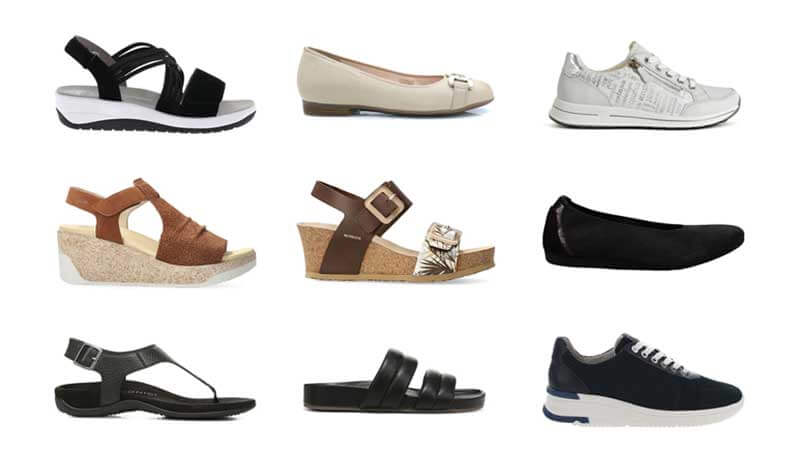Types of Running Shoes to Consider
Much of the recent research in athletic shoes has focused on the development and improvement of running shoes. Running shoes are grouped into three categories:
Cushioned or "neutral" shoes are designed for runners with high-arched, rigid feet. Runners with this type of foot are classified as "supinators." The midsole of a cushioned running shoe will generally have a single color of soft foam material, ethylene vinyl acetate (EVA), in the arch and heel. A moldable synthetic material, EVA has varying density properties to provide more or less cushion in the shoe.
Stability shoes provide light to moderate stability for individuals with an arch that may collapse while running. This type of runner, classified as a "pronator," needs to maintain their arch while running. Stability shoes have two to three different shades of gray polyurethane material in the arch, and possibly the heel, each with a different density to provide more support for the pronated (flat) foot type. The polyurethane material will make the shoe feel heavier than a shoe made only with EVA.
Motion-control shoes are designed for runners who are "severe pronators." Motion-control shoes are the most stable running shoes and are the shoe of choice for runners with flat feet, and those with a heavier body weight. A motion-control shoe may have an extra stabilizer added to the inside edge of the heel counter to provide maximum control. The outer sole of the running shoe will be made of carbon rubber or blown rubber, which is made with injected air. A carbon rubber sole is made from a heavier material, is somewhat stiffer, and provides more durability to the shoe. Blown rubber soles are flexible and lighter in weight providing more cushion than stability.
The best way to determine if you are a supinator or pronator runner is to have a professional evaluate your foot. To determine your foot type on your own, view your footprint when you step out of the pool or shower. If you leave a wide, flat footprint you have a pronated foot. If the footprint is missing the inside of the foot, where your arch did not touch the ground, you have a supinated foot type.
While knowing what type of foot you have is a first step toward buying the correct shoe, the pronation/supination component may be magnified during running. An Annapolis podiatrist can perform a gait analysis to definitely determine how your foot functions while you are running.


 Choosing the right running shoe is one of the most important decisions a runner must make. The wrong shoes can lead to injury, discomfort, or end your running career before it begins. However, choosing the right shoe will keep your feet happy, support your unique running mechanics, and make the miles fly by.
Choosing the right running shoe is one of the most important decisions a runner must make. The wrong shoes can lead to injury, discomfort, or end your running career before it begins. However, choosing the right shoe will keep your feet happy, support your unique running mechanics, and make the miles fly by.
